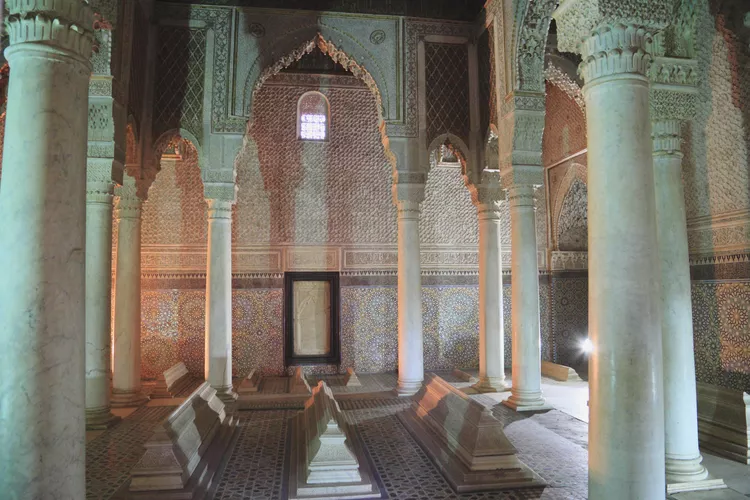The Moroccan city of Marrakesh is rich with captivating historical architecture. One of the most intriguing sites is the Saadian Tombs, situated just outside the medina walls near the renowned Koutoubia Mosque. Constructed during the reign of Sultan Ahmad el Mansour in the 16th century, these tombs are now an essential attraction for visitors worldwide.
History of the Tombs
Ahmad el Mansour, the sixth and most famed Sultan of the Saadi Dynasty, governed Morocco from 1578 to 1603. His era was marked by murder, intrigue, and warfare, with the profits from successful military campaigns funding remarkable architectural projects across the city. The Saadian Tombs, completed within his lifetime as a burial place for the Sultan and his descendants, represent his legacy. El Mansour was lavish in his designs, leading to the tombs becoming masterpieces of Moroccan craft and architecture by the time of his burial in 1603.
Following el Mansour’s death, the tombs faced a decline. In 1672, Alaouite Sultan Moulay Ismail rose to power and sought to create his own legacy by demolishing buildings commissioned during el Mansour’s reign. However, Ismail opted not to destroy the tombs entirely but rather walled them up, permitting only a narrow passage from the Koutoubia Mosque. Consequently, the tombs and their ornate interior fell into obscurity for centuries.
It wasn’t until an aerial survey conducted by French Resident-General Hubert Lyautey in 1917 that the existence of the Saadian Tombs was rediscovered. Recognizing their historical importance, Lyautey initiated restoration efforts to bring the tombs back to their original splendor.
The Tombs Today
Today, the tombs are accessible to the public, allowing visitors to witness the remnants of the Saadi Dynasty firsthand. The complex showcases breathtaking designs, featuring soaring domed ceilings, intricate wood carvings, and imported marble statues. Throughout the tombs, colorful tile mosaics and delicate plasterwork exemplify the artistry of 16th-century artisans. The site comprises two primary mausoleums containing 66 tombs, with a rose-filled garden serving as the burial ground for over 100 royal household members, including trusted advisers, soldiers, and servants. The lesser graves are adorned with engraved Islamic inscriptions.

The Two Mausoleums
The first and most renowned mausoleum is located on the left side of the complex, serving as the burial ground for el Mansour and his descendants. The entry hall features the marble tombs of several Saadian princes.
In this segment of the mausoleum, visitors can find the tomb of Moulay Yazid, one of the few individuals interred in the Saadian Tombs post-Moulay Ismail’s reign. Known as the Mad Sultan, Yazid ruled for a brief two years (1790-1792) amidst a devastating civil war. The highlight of the first mausoleum is undoubtedly the opulent tomb of el Mansour himself.
El Mansour is interred in a central chamber known as the Chamber of the Twelve Pillars, featuring pillars crafted from fine Carrara marble sourced from Italy, with gilded decorative plasterwork. The intricately carved doors and screens of el Mansour’s tomb exemplify masterful hand-carving, complemented by impeccable tile-work.
The second, slightly older mausoleum houses the tomb of el Mansour’s mother and that of his father, Mohammed ash Sheikh. Ash Sheikh is historically recognized as the founder of the Saadi Dynasty and was tragically murdered by Ottoman soldiers during a conflict in 1557.
Practical Information
The easiest route to the Saadian Tombs involves following Rue Bab Agnaou from Marrakesh’s famous medina marketplace, Djemaa el Fna. After a scenic 15-minute walk, you arrive at the Koutoubia Mosque, where clear signposts guide you to the tombs.
The tombs are open daily from 9:00 a.m. to 5:00 p.m. Entrance costs 7€ (approximately $8), and visits can easily coordinate with a tour of the adjacent El Badi Palace, which was also constructed by el Mansour and later stripped by Moulay Ismail.





